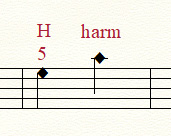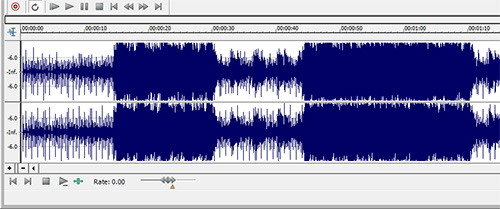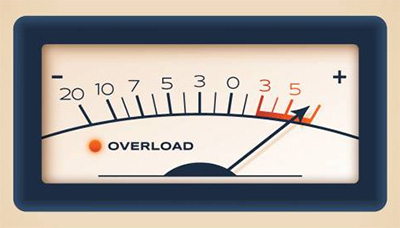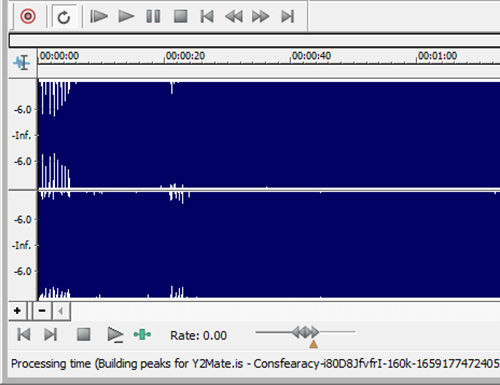BY ARTIST
BY TITLE


Most of the transcriptions are self-explanatory and straightforward to play. However, there are a few things which will need to be clarified if you are to make the best use of the music.
When I write down a bassline I try to make it as accurate as possible while at the same time making it easy to read. Have a look at the three barres below...

fig. a shows the 'correct' way to notate a barre of detached quarter notes (Think of something like the bassline in Give Me A Bullet by AC/DC), but I find that it's a bit unwieldly to read and it doesn't visually convey the simplicity of the line. Also, it would take so much longer to enter this kind of line into the notation software that I use. fig. b is a much easier way to show the same thing by using staccato markings but is still a bit of a pain in the arse to have to click every note and add the dot so I usually just notate it as fig. c.
Remember; always listen to the original recording in order to hear how a bassline should be played.

Key Signatures
It's very common in rock music to use the dominant 7th. Take a look at the riff in E Major below...


As you can see from this version, simply using a key signature of A Major removes the need to chuck loads of accidentals all over the place. Expect the same sort of thing in other keys. eg. A Maj becomes D Maj, D Maj becomes G Maj etc.
Harmonics
Harmonics will be shown with a diamond shaped notehead, normally in one of two different ways...

Timing
This one's just a bit of a caveat in case it comes up. When I first started transcribing stuff I was still learning and some of my timings may be off. As an example, for that Status Quo-y boogie-y rythm thingy, I tended to use dotted 8th notes and a 1/16 note (fig. a) in 4/4 time instead of 1/4 note and 8th note for 12/8 (ie. swing time fig. b). Here's an example of what I'm talking about...

Missed Notes
I try to be as accurate as possible when transcribing but it's not always possible to hear what the bass guitar is doing as it's so buried in the mix. Have a listen to bands like Alter Bridge or Black Stone Cherry and you can feel that the bass is there but it's difficult to tell what notes are being played. In these cases I try to put down what seems like the right notes but I can't guarantee that it's exactly the same as is played on the recording.
Talking about recording.... I work from MP3s a lot and I think (I may be very wrong here) that the data compression can cause missed resolution of the music and therefore notes are not heard. Here's an example of what I mean -

Modern Recording Techniques
I'm hoping that this is a dying practice in mastering but I still come across it quite often. There is a school of thought that says that 'everything needs to be louder than everything else' when mixing. It is, I suppose, to make things stand out when being played on TV, radio, juke boxes (are juke boxes still a thing or do they call them something different now? Answers on a coastguard please and send to the BBC!), etc. It's a detriment to the dynamic feel of a song and makes everything the same volume all the way through the song. Have a look at britpop darlings Blur's Song 2 waveform...


Bending the needle.


A final note on the transcriptions...
I hope that these basslines will be useful to some of you. They are mainly rock songs as that is the sort of bands I have been playing in for most of my life. I have put a lot of hours of work into these transcriptions and have tried to make them as accurate as I can. Remember to always listen to the original in order to get the feel for how the music should be played. Please support the artists by buying their music, merch, going to gigs etc.
If there's something that you've seen on the website and you're not sure what it is, then drop me an email at bob@bobsbasslines.com and I'll do my best to help.
Everything on this website is free for personal use, education and study so please don't alter them or try to sell them. If these basslines have been of use to you and you would like to help to keep this website up and running then please consider making a donation via the little button on the bottom of the page. Thanks.
And remember, listen, listen listen and enjoy playing the music!
Cheers,
Bob
All the transcriptions on this website are free of charge to download for personal use. However, if you wish to help to keep the website up and running then you can make a donation here -
Copyright Disclaimer Under Section 107 of the Copyright Act 1976
"Copyright Disclaimer Under Section 107 of the Copyright Act 1976, allowance is made for "fair use" for purposes such as criticism, comment, news reporting, teaching, scholarship, and research. Fair use is a use permitted by copyright statute that might otherwise be infringing. Non-profit, educational or personal use tips the balance in favor of fair use."